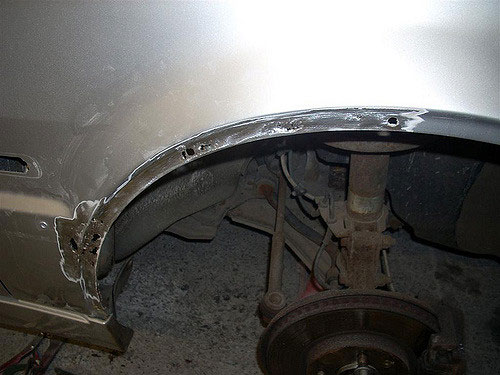Did you know that the average mechanic charges about $100 per hour for labor on your vehicle? This excludes the cost of any car parts, storage and sales tax that might be required. As you can imagine, owning a brand such as Saab – whose cars are no longer in production and technicians are few and far between – might increase the cost of having your vehicle serviced by a pro.

While there are certain repairs for your Saab that definitely require the elite training and expertise of a certified Saab technician/mechanic, there are some basic parts repairs and maintenance that you can learn to do yourself, saving you some extra cash.
What You’ll Need
If you’re serious about learning how to comprehensively repair and maintain various parts and systems in your Saab, you’ll want to have a few things on hand-
- Saab Owner’s Manual – The owner’s manual for your Saab is the equivalent of a “bible” for your car. It tells you about every detail of your car, how to break certain things down, and when certain parts likely need to be repaired for maximum safety and efficiency. It will be your go-to guide for help and diagrams when working on your automobile.
- Basic Car Toolkit – While the varying auto parts you need will greatly depend on what repairs or maintenance you’re completing, there are some basic auto tools you’ll want to have. This includes a car jack, open-end and socket wrenches, a set of Phillips and flathead screwdrivers, pliers, a drain pan, and support stands.
- Reliable Saab Parts Vendor – Since you’ll be doing your own repairs, you’re going to be getting the various Saab parts yourself to complete each job. Whether you have to order a replacement OEM brake kit, new engine parts like spark plugs, or even performance parts upgrades like suspension, you’ll want a friendly and helpful source. You can browse through a Saab auto parts catalog online to see the stores that have the part you need, the best reputation and reasonable prices.
- OBD Code Reader – Most cars operate on computers that shoot out codes to expand details on issues that might be going on under the hood. Investing in a code reader might seem like overkill at first. However, if you consider that it quickly tells you exactly what the issue is, there’s an argument that it’s worth the cost. A diagnosis from a mechanic can run upwards of $75-$100 each time.
DIY Auto Parts Repairs and Maintenance
Once you’ve found all the above necessities, you’re ready to begin learning about basic repairs and maintenance you can do for your Saab to save money. Here are some of the most common DIY maintenance:
Dead Battery
If your car won’t start, you can check it with a multimeter if you have one to make sure it’s not the alternator or starter. Once you’re sure it’s the battery, clean off any corrosion with a metal brush. Then unbolt the negative terminal followed by the positive terminal. Lastly, check to see if there is an extra ground wire you’ll need to disconnect before removing the battery. Simply drop in a new one, re-bolt the positive and negative terminals and you’re good to go.
Oil Fluid and Filter Change
After driving about 3,000-5,000 miles you’ll need to change your oil fluids and filter. Before changing your oil on your own, you need to know the type of oil and filter you need, where the oil filter and oil pan are located in the engine, and how much oil your engine actually needs. This can all be found in your Saab owner’s manual.
Loosen the pan’s bolt and drain out the old fluid. Replace the oil filter, tighten the pan bolt back up, and then add new oil to the engine. Remember to run your car for a few minutes before driving to cycle in the new oil through the filter.
Faulty Ignition Coil (DIC)
Believe it or not, the DIC (Direct Ignition Cassette) is one of the easiest part repairs you can perform on your Saab – and one of the most common. In most cases, it’s a matter of four screws, some conductive gel and the right replacement engine DIC. There are both OEM and aftermarket options available for Saab cars, and a new DIC can tremendously improve your engine’s performance. So, if you’ve noticed any misfires and/or sluggish performance, it might be that the DIC engine part needs replacing. Once you’ve determined that the culprit, you can get your beloved automobile back up to par in no time.
Squeaky Belts
Are you hearing annoying squeaking sounds every now and then? This is usually the indication of a bad belt. You can easily check your Saab’s engine belts to see the wear and tear. Be sure to also check the belt diagram in your owner’s manual carefully so you know which path each belt takes. To change out these engine parts in your Saab, take a ratchet and loosen the tension arm so that the belt is loose. Before applying a new belt, check to ensure there is no excess rubber, oil or debris that could cause your new belts to disintegrate faster. Referencing the diagram, reroute the new belts through the pulleys, lock the tension arm back and you’re all set.
This is only a small list of repairs and maintenance tasks that you should complete on your Saab. In learning these basics, you essentially gain a very valuable life skill that will save you money and time over and over again. If for some reason your Saab is experiencing an issue that’s outside your comfort level or experience, spend a little time to find the best mechanic to work on your car.